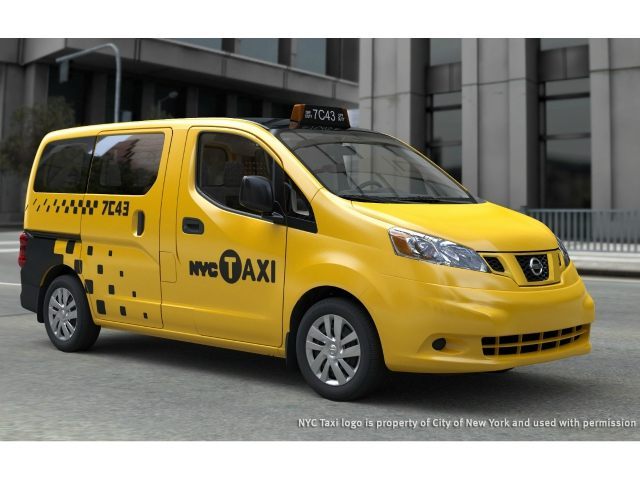(Ferenstein Wire)—A brand new taxi design was unveiled last week to mixed fanfare, as the tech-enabled Nissan NV 200 “Taxi of Tomorrow” runs on a decidedly 19th-century technology: fossil fuel combustion.
Over the next 10 years, NYC taxi organizations will direct about 80 percent of their fleet to adopt the new car, even as electric vehicle sales will spike for the rest of the auto industry.
To compare the Taxi of Tomorrow to their Silicon Valley competitors, the Ferenstein Wire reached out to ride-hailing companies for stats on battery-powered vehicles and carpooling. Lyft says that about 15 percent of its fleet in NYC is hybrid and “more than 30%” of all rides are carpools (15 percent is about 5x higher than the total hybrid market share as of 2014). So, about half of Lyft’s total mileage in NYC is using dramatically more fuel and pumping less pollutants into the air as a normal car.
A spokesman for the NYC taxi commission tells the Ferenstein Wire that taxi companies were precluded by law from requiring the auto designers from electrically-powered vehicles. In the end, “none of the the bidders submitted a hybrid vehicle” for consideration.
When asked about ride-hailing, the spokesman said that taxis don’t capture the number of riders in a car, but he said that taxi stands encourage carpooling, especially from airports. For broader carpooling around the city, “we’ve tried it a number of times, most of our experiments have not gone as successfully as we would have liked them to go,” he admitted.
The taxi commission was surprisingly complimentary of ridesharing apps that encourage carpooling and was extraordinarily responsive to our questions, but they noted that the taxi industry itself is sort of hamstrung by all sorts of requirements. Most cars have to meet the eclectic demands of all types of riders (including those with wheelchairs), must protect drivers, and be amenable to passengers.
The ride-hailing companies have managed to disaggregate all of these different demands by allowing users to choose what kind of vehicle they want (whether it’s wheelchair accessible or luxury). Credit card numbers and real identities also help keep sketchy riders out of cars.
The taxi industry is doing what it can to embrace modernization, but with all sorts of logistic and legal constraints, if their vehicles are still powered by 19th-century technology, it does not bode well for their future.
For more stories like this, subscribe to the Ferenstein Wire newsletter here.

COMMENTS
Please let us know if you're having issues with commenting.